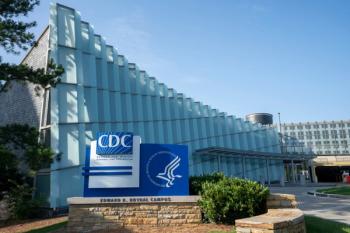
Implications of OCM Reports and the Future of the Program
Lalan Wilfong, MD, moderated a conversation between Robert E. Baird, MD, CEO of Dayton Physicians Network, and Sarah Cevallos, chief revenue cycle officer for Florida Cancer Specialists and Research Institute, about current and future strategies for Oncology Care Model (OCM) participation, as well as key lessons from the OCM and how they can be applied in other reform models.
Practices participating in the Oncology Care Model (OCM) have now received results from 2 performance periods (PP). The first PP (PP1) results had shown that only 25% of practices achieved performance-based payments, while performance improved slightly in the second PP (PP2), with close to 30% of practices achieving performance-based payments, explained Lalan Wilfong, MD, vice president of quality programs at Texas Oncology.
On October 25, Wilfong sat down with Robert E. Baird, MD, CEO of Dayton Physicians Network, and Sarah Cevallos, chief revenue cycle officer for Florida Cancer Specialists, to discuss implications of the PP reports, as well as what they mean for the future.
Before joining the OCM, both practices had participated in other payer pilots, from which they gained experience with value-based payment models. According to Cevallos, getting involved with the OCM felt like “a natural transition,” but it remains “a work in progress every day.”
Baird explained that his practice wanted to be involved with the OCM after its experience with the COME Home project. It was during that project that his practice and its physicians understood that healthcare was really changing to more of a value-based model.
“We wanted to participate in OCM because we knew we wanted to be part of the solution and part of the transition and not just have things dictated towards us,” Baird explained.
Both Cevallos and Baird noted that participating in the OCM meant big changes in infrastructure and how care was delivered. Dayton Physicians Network implemented a nurse triage line and increased office hours, so patients have access to care on the weekends and late weekdays and don’t have to go to the emergency department or another site of care. Cevallos said that Florida Cancer Specialists made some of those same changes and also added hospitalists.
Communication about OCM remains a challenge. Baird and Cevallos both said that translating the requirements of the program to the practice and everyone involved has been one of the biggest hurdles. Both practices have implemented a lot of education and training for physicians and staff.
Cevallos said that “…you really need a dedicated team to make sure that they can translate the information to the clinical team and the operations team that’s not in it every day.” She added that some people have the ability to be on webinars in the middle of the day to learn about the program, but clinicians are busy with patients and need that information from the webinars explained to them later on.
They also discussed the results seen so far in the OCM. At the time of recording, practices had received PP1 and PP2 reports, which summarized spending and if costs of care were higher or lower than expected.
“The initial reconciliation reports were definitely shocking for us,” Cevallos admitted. Since then, Florida Cancer Specialists has made changes and seen positive results for PP2, but the reports are something that the practice is “still digesting and really trying to understand what to do next in terms of actionable items within the data.”
Baird agreed that the amount data can be overwhelming, and Dayton Physicians Network used an outside consultant to parse through the information to find areas of opportunity and areas of success. Baird added that his practice was also surprised with PP1 results. He called PP1 an “ah-ha” moment for most practices as they realized just how serious CMS was about the program, how much data it had, and that it could really measure practices’ performance to see how they improve quality and cost.
“That was a call to action,” Baird said. “That was when we really started to take some of the changes we needed to make seriously.”
After PP1, some of excitement of participating in the OCM waned for everyone, Baird said, because the results were so disappointing. However, some of the excitement has rekindled after PP2. For instance, even though Dayton Physicians Network did not achieve a performance-based payment in either performance period, it made a lot of progress toward getting the payment.
For practices that are not achieving shared savings in the OCM, CMS has a budget neutral pay-for-performance option, Wilfong noted. Under that 2-sided risk model, some practices are penalized and others are rewarded, and both Cevallos and Baird believed that the model was too risky to get involved in.
Cevallos noted that her problem with the model was that practices don’t have access to real-time data. Baird agreed that being held responsible for something a practice may have changed and fixed a while ago was too risky. He said that a 2-sided risk model isn’t feasible for his practice.
“We just cannot take that chance of the 20% potential downside,” he said. “It would put our practice out of business if we had to pay that entire amount back.”
Baird added that if smaller practices are pushed into 2-sided risk, it may force more consolidation with other private practices or into systems, which is not a desirable outcome.
One of the main lessons Cevallos has learned from the OCM that can be passed on to other models with commercial payers is the importance of simplicity in these programs. The value-based programs that Florida Cancer Specialists participates in are all different, but they are still focused on total cost of care and have the same goals. She suggested the benefit of being able to look at the large list of OCM measures and choosing just a few that would be very impactful to focus on and report on in other models.
As for the future after OCM, Baird noted that if this is the new way CMS wants to reimburse for oncology care, then there are some aspects of the program to continue, but other aspects are more burdensome and can be gotten rid of. In addition, it’s important that there is adequate funding in place because these changes require a lot of infrastructure and a lot of resources to manage patients with cancer and ensure they are taken care of.
“If we don’t have the resources supplied to us, those patients may move into higher-cost settings, have more complications, and just see the quality of care go down from there,” Baird said.
He added that it will be difficult to just cut off funding after 5 years, the full length of the OCM, given the significant changes participating practices made. Part of the ongoing discussions that are improving the model also need to consider what comes next.
“How do you prepare for the next step? How do you bridge between what’s happening now and what’s happening next?” Cevallos asked. “And I’m glad we’re asking those questions now and starting those conversations now, because it’s going to take that much time to prepare for it.”
Newsletter
Stay ahead of policy, cost, and value—subscribe to AJMC for expert insights at the intersection of clinical care and health economics.





























































